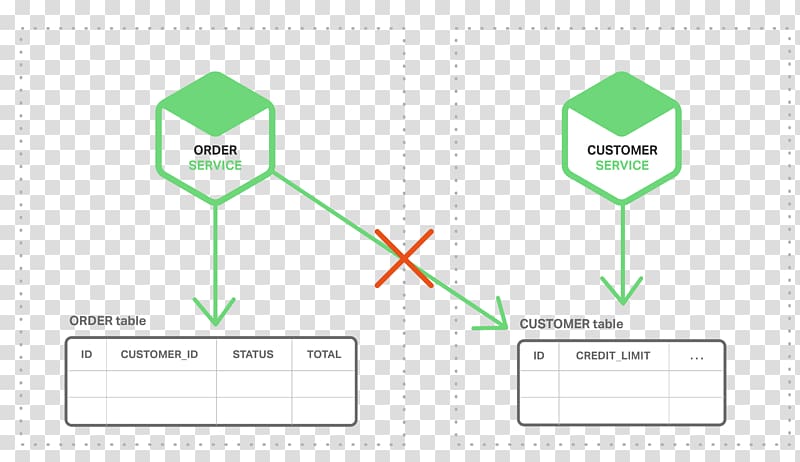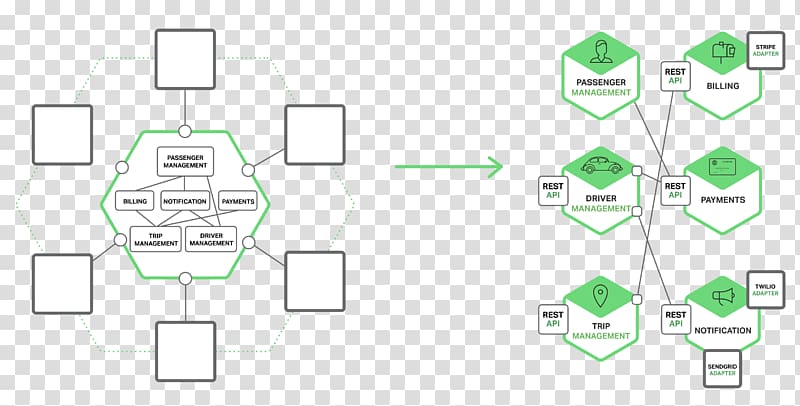For decades, Java has been a dominant force in enterprise software development, known for its stability, performance, and robust ecosystem. However, the rise of cloud computing has fundamentally reshaped application architecture. The era of monolithic applications deployed on hefty application servers is giving way to a new paradigm: lightweight, scalable, and resilient cloud-native services. Far from being left behind, Java has evolved magnificently to become a first-class citizen in this new landscape. Modern Java development for the cloud is about embracing microservices, containerization, and a suite of powerful frameworks designed for agility and scale.
This comprehensive guide explores the essential concepts, tools, and best practices for building modern Java applications in the cloud. We’ll move beyond theory and dive into practical code examples, demonstrating how frameworks like Spring Boot simplify the creation of standalone, production-grade services. You’ll learn how to package your applications using Docker, implement advanced asynchronous patterns, and adopt best practices for performance and observability, empowering you to leverage the full potential of Java in a cloud environment.
The Foundation: Shifting from Monoliths to Cloud-Native Java
The journey to the cloud begins with a fundamental shift in architectural thinking. Traditional Java Enterprise (Java EE / Jakarta EE) applications were often large, monolithic codebases running on powerful, centralized application servers. While effective in their time, this model presents challenges in the cloud, including slow deployments, difficult scaling, and a lack of fault isolation. The cloud-native approach addresses these issues directly.
From Monoliths to Microservices
The microservices architecture is a cornerstone of cloud-native development. It involves breaking down a large application into a collection of smaller, independent services. Each service is responsible for a specific business capability, has its own database, and can be developed, deployed, and scaled independently. This approach offers immense benefits for Java Scalability and resilience. If one service fails, it doesn’t bring down the entire application. This modularity aligns perfectly with the elastic nature of the cloud, allowing teams to scale only the components that need it.
The Rise of Lightweight Frameworks: Spring Boot and Beyond
To build microservices effectively, developers needed a way to create self-contained, executable applications without the overhead of a traditional application server. This led to the rise of lightweight frameworks, with Spring Boot becoming the de facto standard in the Java Development community. Spring Boot’s “convention over configuration” philosophy drastically simplifies the process of building a Java REST API. It embeds a web server (like Tomcat or Netty) directly into the application’s JAR file, creating a single, runnable artifact.
Here’s how simple it is to create a web endpoint with Spring Boot:
package com.example.cloudapp.controller;
import org.springframework.web.bind.annotation.GetMapping;
import org.springframework.web.bind.annotation.RequestParam;
import org.springframework.web.bind.annotation.RestController;
import java.util.Map;
/**
* A simple REST controller to demonstrate a cloud-native Java endpoint.
*/
@RestController
public class GreetingController {
/**
* Responds with a personalized greeting.
* Example: /greet?name=Cloud
* @param name The name to include in the greeting.
* @return A map containing the greeting message.
*/
@GetMapping("/greet")
public Map<String, String> sayHello(@RequestParam(value = "name", defaultValue = "World") String name) {
return Map.of("greeting", String.format("Hello, %s! Welcome to the Java Cloud.", name));
}
}
This small class is a complete, runnable web application. There’s no XML configuration or manual server setup. This is the essence of modern Java Backend development for the cloud: fast, simple, and focused on business logic.
Building and Containerizing a Cloud-Native Service
With the foundational concepts in place, let’s build a more realistic microservice and prepare it for cloud deployment. A typical service involves multiple layers, including controllers, business logic (services), and data persistence (repositories).

Microservices architecture diagram – Event-driven programming Microservices Event-driven architecture …
Implementing a Multi-Layered Microservice with Spring Data JPA
Let’s expand our application to manage a simple `Product` entity. We’ll use Spring Data JPA and Hibernate to interact with a database, abstracting away the boilerplate JDBC code. The key is separating concerns: the controller handles HTTP requests, the service contains business logic, and the repository manages data access.
First, we define a repository interface. Spring Data JPA will automatically provide the implementation at runtime.
package com.example.cloudapp.repository;
import com.example.cloudapp.model.Product;
import org.springframework.data.jpa.repository.JpaRepository;
import org.springframework.stereotype.Repository;
import java.util.List;
/**
* ProductRepository interface for data access.
* Extends JpaRepository to get CRUD operations for free.
*/
@Repository
public interface ProductRepository extends JpaRepository<Product, Long> {
// Spring Data JPA will automatically implement this method based on its name.
List<Product> findByCategory(String category);
}
Next, the service class uses this repository to implement our business logic. Spring’s dependency injection (`@Autowired`) wires the components together seamlessly.
package com.example.cloudapp.service;
import com.example.cloudapp.model.Product;
import com.example.cloudapp.repository.ProductRepository;
import org.springframework.beans.factory.annotation.Autowired;
import org.springframework.stereotype.Service;
import java.util.List;
import java.util.stream.Collectors;
/**
* Service class containing business logic for products.
*/
@Service
public class ProductService {
private final ProductRepository productRepository;
@Autowired
public ProductService(ProductRepository productRepository) {
this.productRepository = productRepository;
}
/**
* Finds all products and returns their names.
* Demonstrates use of Java Streams.
* @return A list of product names.
*/
public List<String> getAllProductNames() {
return productRepository.findAll()
.stream() // Using a Java Stream for functional-style processing
.map(Product::getName)
.collect(Collectors.toList());
}
}
Containerization with Docker
To run our application in any cloud environment (AWS Java, Azure Java, Google Cloud Java), we need to package it into a container. Docker is the industry standard for this. A `Dockerfile` provides the instructions to build a container image.
A best practice is to use a multi-stage build. The first stage uses a full JDK and a build tool like Java Maven or Java Gradle to compile the code and build the JAR. The second stage copies only the final JAR into a minimal Java Runtime Environment (JRE) image. This creates a much smaller, more secure, and faster-starting final image, which is crucial for Java Performance in the cloud.
# Stage 1: Build the application using Maven
FROM maven:3.8.5-openjdk-17 AS build
# Copy the project files
WORKDIR /app
COPY pom.xml .
COPY src ./src
# Build the application JAR, skipping tests for a faster build
RUN mvn clean package -DskipTests
# Stage 2: Create the final, minimal runtime image
FROM openjdk:17-jre-slim
# Set a working directory
WORKDIR /app
# Copy the executable JAR from the 'build' stage
COPY --from=build /app/target/*.jar app.jar
# Expose the port the application runs on
EXPOSE 8080
# Command to run the application
ENTRYPOINT ["java", "-jar", "app.jar"]
With this `Dockerfile`, we can build a portable image that can be deployed consistently across development, testing, and production environments, often orchestrated by Kubernetes Java.
Advanced Cloud-Native Java Techniques
Building robust, high-performance cloud applications requires more than just creating REST APIs. We need to handle concurrency, manage distributed state, and build resilient systems that can withstand failures.
Asynchronous Processing with CompletableFuture and Java Streams
In a microservices architecture, a single user request might require calls to multiple downstream services. Making these calls sequentially is slow and inefficient. Java Async programming is essential for performance. Java’s `CompletableFuture`, introduced in Java 8 and enhanced in later versions like Java 17 and Java 21, provides a powerful way to compose asynchronous operations.
Imagine a service that needs to fetch user details and their recent orders from two different services concurrently. `CompletableFuture` makes this elegant and efficient.




Microservices architecture diagram – Microservices Architecture Architectural style, mobile presntation …
package com.example.cloudapp.service;
import com.example.cloudapp.dto.UserDashboard;
import com.example.cloudapp.dto.UserDetails;
import com.example.cloudapp.dto.Order;
import org.springframework.stereotype.Service;
import java.util.List;
import java.util.concurrent.CompletableFuture;
import java.util.concurrent.ExecutorService;
import java.util.concurrent.Executors;
/**
* A service demonstrating asynchronous data fetching.
*/
@Service
public class DashboardService {
// Use a dedicated thread pool for async tasks
private final ExecutorService executor = Executors.newFixedThreadPool(10);
// Mock async call to a user service
private CompletableFuture<UserDetails> fetchUserDetails(String userId) {
return CompletableFuture.supplyAsync(() -> {
// Simulate network latency
try {
Thread.sleep(200);
} catch (InterruptedException e) {
Thread.currentThread().interrupt();
}
return new UserDetails(userId, "Jane Doe");
}, executor);
}
// Mock async call to an order service
private CompletableFuture<List<Order>> fetchUserOrders(String userId) {
return CompletableFuture.supplyAsync(() -> {
// Simulate network latency
try {
Thread.sleep(300);
} catch (InterruptedException e) {
Thread.currentThread().interrupt();
}
return List.of(new Order("order123"), new Order("order456"));
}, executor);
}
/**
* Fetches user details and orders concurrently and combines them.
* @param userId The ID of the user.
* @return A CompletableFuture containing the combined dashboard data.
*/
public CompletableFuture<UserDashboard> getDashboardData(String userId) {
CompletableFuture<UserDetails> userDetailsFuture = fetchUserDetails(userId);
CompletableFuture<List<Order>> userOrdersFuture = fetchUserOrders(userId);
// Combine the results of the two futures when both are complete
return userDetailsFuture.thenCombine(userOrdersFuture, (details, orders) -> {
return new UserDashboard(details.getName(), orders);
});
}
}
In this example, `fetchUserDetails` and `fetchUserOrders` run in parallel. The total execution time is determined by the longest-running task (~300ms), not the sum of both (~500ms). This is a critical pattern for building responsive Java Microservices.
Configuration, Resilience, and Service Discovery
In a distributed system, services need to be configurable, discoverable, and resilient.
- Externalized Configuration: Don’t hardcode configuration (like database URLs or API keys) in your application. Use tools like Spring Cloud Config or Kubernetes ConfigMaps to manage configuration externally. This allows you to change settings without rebuilding and redeploying your service.
- Service Discovery: How does Service A find Service B in a dynamic cloud environment where instances are constantly being created and destroyed? Service discovery tools like Eureka, Consul, or Kubernetes’ built-in DNS solve this problem.
- Fault Tolerance: Services will inevitably fail. It’s crucial to design your application to handle these failures gracefully. The Circuit Breaker pattern, implemented by libraries like Resilience4j, prevents a client from repeatedly calling a failing service, giving it time to recover.
Best Practices for Java in the Cloud
Writing the code is only part of the story. Running it efficiently and reliably in production requires adhering to several best practices.
JVM Tuning and Container Awareness
The Java Virtual Machine (JVM) is a sophisticated piece of technology, but it needs to be configured correctly for a containerized environment. Modern JVMs (Java 17, Java 21) are much better at detecting container memory and CPU limits. However, it’s still good practice to explicitly set the maximum heap size (`-Xmx`) to be a safe fraction of the container’s memory limit. This prevents the container orchestrator (like Kubernetes) from killing your application for exceeding its memory allocation.




Microservices architecture diagram – What are Microservices and Can this Architecture Improve Your …
Observability: The Three Pillars
In a distributed system, you can’t debug by SSHing into a server. You need robust observability.
- Logging: Use structured logging (e.g., JSON format) to make logs easily searchable. Libraries like SLF4J with Logback are standard.
- Metrics: Expose application metrics (e.g., request latency, error rates, JVM stats) using a library like Micrometer. These can be scraped by a monitoring system like Prometheus to create dashboards and alerts.
- Tracing: Implement distributed tracing with tools like OpenTelemetry or Jaeger to trace a single request as it flows through multiple microservices. This is invaluable for pinpointing bottlenecks and errors.
Security Best Practices
Cloud security is paramount. Secure your endpoints using standards like OAuth 2.0 and OpenID Connect. Use JSON Web Tokens (JWTs) for stateless, secure communication between services. The Spring Security framework provides comprehensive tools for implementing robust Java Authentication and authorization, protecting your Java REST API from unauthorized access.
Conclusion: The Bright Future of Java Cloud Development
Java has successfully navigated the paradigm shift to cloud-native computing, proving its resilience and adaptability. The combination of the powerful JVM, a mature ecosystem, and modern frameworks like Spring Boot makes Java Programming an excellent choice for building scalable, high-performance cloud applications. By embracing microservices, containerizing applications with Docker, and applying advanced patterns for concurrency and resilience, developers can build robust systems ready for the demands of the modern cloud.
The journey doesn’t end here. The next steps are to explore even more advanced topics like serverless Java with AWS Lambda, reactive programming with Project Reactor, and achieving near-instant startup times with GraalVM native images. The world of Java Cloud development is vibrant and continuously evolving, offering endless opportunities for innovation and growth.
